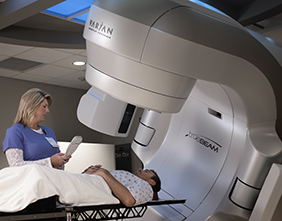Cardiac Risk Evaluation Prior to Non-Cardiac Surgery
posted on: 2/21/2019 2:35:44 PM
Zane WM Dean, M.D., FACC
Interventional Cardiologist with Lima Memorial Heart and Vascular Institute

Every surgical procedure carries some risk, but generally the risk is relatively low, especially in healthy individuals (serious medical complication from surgery is less than 0.1% overall). In addition, emergency surgery poses 2-5 times the risk, as compared to elective procedures. The goal of cardiac risk evaluation is to identify people at risk for a major cardiac event. Many people undergoing non-cardiac surgery are at risk of various heart complications, including but not limited to, acute heart attacks and strokes. This risk is related to both patient characteristics as well as the type of surgery.
It is prudent that patients scheduled to have non-cardiac surgery have a cardiac risk assessment to help both patients and physicians carefully assess the risk and benefits of surgery. A good history, physical examination and evaluation of the type of surgery are used in estimating this risk. This evaluation is commonly performed by the primary care physician, and when deemed appropriate, the patient then be referred to a cardiologist.
Pertinent history about symptoms of chest pain, shortness of breath, palpitations, dizziness, lightheadedness, history of heart disease, hypertension, diabetes, chronic kidney disease, stroke / transient ischemic attack and peripheral vascular disease is obtained from the patient. Additionally, a thorough physical examination, focusing on the cardiovascular system, including blood pressure measurement, heart and lung examination and extremity evaluation for edema, is necessary.
A patient’s functional status is an essential factor effecting peri-operative outcomes. Cardiac functional capacity of the individual is assessed with a brief questionnaire and expressed in metabolic equivalents.
Patients considered to be healthy or at low risk may proceed to surgery without preoperative cardiac testing. Those who have elevated risk but have good exercise capacity might not need further preoperative cardiac testing before a low or intermediate risk procedure. Those considered high risk and have poor functional status may be considered for non-invasive testing before surgery.
A simple electrocardiogram (EKG) is performed on individuals with cardiac disease, except those having a low–risk surgery. For those with suspected or known heart disease, further cardiac testing, including echocardiography, stress testing or 24-hour ambulatory blood pressure monitoring, is performed, if and when indicated based on surgery-specific risks.
In a nutshell, comorbid conditions that increase peri-operative risk are heart disease, cerebrovascular disease, lung disease, kidney disease, diabetes, bleeding disorder and liver disease. Obesity, pregnancy state, smoking, alcohol abuse, substance abuse, poor national status and poor exercise tolerance also contribute to the risk. Estimation of cardiac risk will identify patients who will need further cardiac evaluation, and appropriate treatment protocols could be formulated to minimize risk and achieve excellent surgical outcomes.
Originally published in The Lima News Health and Fitness section.
Website





